Knight (1280) - 54mm Andrea Minitures
By Shane Jenkins
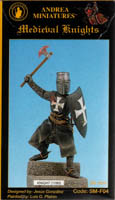 |

 |
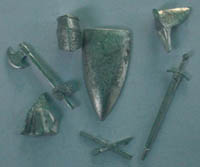 The Order of St John was formed around 1100 in Jerusalem, where the Founder of the Order, Brother Gerard, had set up a hospice to care for pilgrims travelling to the Holy Land. The Knights Hospitaller were formed circa 1120 after the first Master of the Order, Raymond de Puy decided that having a military arm of the Order was a good idea. The Knight Hospitallers then went to form one of the greatest knighthoods around. They fought in the Holy Land, acquired the Island of Rhodes where they were later evicted after a great siege. They then relocated to Malta, where in 1565 they were put under siege again. This time, under the brillant command of Grand Master John de la Valette (Valleta, Malta's capital is named after him) they were victorious. Later when the power of the Order waned, they surrended Malta to Napoloeon without a fight, but the Order survived.
The Order of St John was formed around 1100 in Jerusalem, where the Founder of the Order, Brother Gerard, had set up a hospice to care for pilgrims travelling to the Holy Land. The Knights Hospitaller were formed circa 1120 after the first Master of the Order, Raymond de Puy decided that having a military arm of the Order was a good idea. The Knight Hospitallers then went to form one of the greatest knighthoods around. They fought in the Holy Land, acquired the Island of Rhodes where they were later evicted after a great siege. They then relocated to Malta, where in 1565 they were put under siege again. This time, under the brillant command of Grand Master John de la Valette (Valleta, Malta's capital is named after him) they were victorious. Later when the power of the Order waned, they surrended Malta to Napoloeon without a fight, but the Order survived.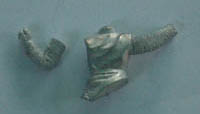 The Knights Hospitaller (or Knights of St John), were divided into sections (or Tongues) according to nationality. During the Reformation, Henry VIII dissolved the English Tongue. The English part of the Order was later revived after the Crimean War. Due to the exploits of Florence Nightingale (among others), the English Order went on to form the St John Ambulance Brigade which is still active in many Commonwealth and non-Commonwealth countries. They carry on the traditions of St John by helping the injured in rendering first aid at various sporting fixtures (eg: The Sydney Olympics) and disaster call outs.
The Knights Hospitaller (or Knights of St John), were divided into sections (or Tongues) according to nationality. During the Reformation, Henry VIII dissolved the English Tongue. The English part of the Order was later revived after the Crimean War. Due to the exploits of Florence Nightingale (among others), the English Order went on to form the St John Ambulance Brigade which is still active in many Commonwealth and non-Commonwealth countries. They carry on the traditions of St John by helping the injured in rendering first aid at various sporting fixtures (eg: The Sydney Olympics) and disaster call outs.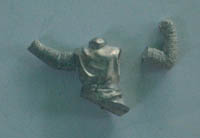
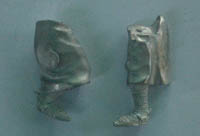 However, the kit does not come with any instruction sheet, painting guide or even historical notes. In conversation with figure modellers, they have said that this is the norm for these sort of kits. However I find this to be un-acceptable in this day and age, maybe I've been "pampered' by other modelling genres, but to find that after spending good money at Historex Agents for a subject close to my heart, that I have to not only research the subject more, but also research the assembly as well, is to put it bluntly, quite disappointing.
However, the kit does not come with any instruction sheet, painting guide or even historical notes. In conversation with figure modellers, they have said that this is the norm for these sort of kits. However I find this to be un-acceptable in this day and age, maybe I've been "pampered' by other modelling genres, but to find that after spending good money at Historex Agents for a subject close to my heart, that I have to not only research the subject more, but also research the assembly as well, is to put it bluntly, quite disappointing.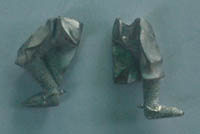 The caption on the box says 1280, which puts the kit approx 10 years before the fall of Acre in 1291. It shows a knight with chain mail and a black surcoat covering it. This figure could be used for any knight of the period I'd say. But if you are going for a Knight of St John be careful in following the boxart as the St John Cross is actually narrower than that painted on the cover, based on the references I have (see below).
The caption on the box says 1280, which puts the kit approx 10 years before the fall of Acre in 1291. It shows a knight with chain mail and a black surcoat covering it. This figure could be used for any knight of the period I'd say. But if you are going for a Knight of St John be careful in following the boxart as the St John Cross is actually narrower than that painted on the cover, based on the references I have (see below).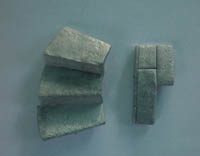 This is a very nice kit let down by the lack of instructions and historical notes, making it more a model for experienced figure builders rather than a novice figure modeler such as myself. If in the future, Andrea Miniatures include instructions and historical notes, this will serve to benefit beginner figure modellers and encourage more modellers to try their hand at figures
This is a very nice kit let down by the lack of instructions and historical notes, making it more a model for experienced figure builders rather than a novice figure modeler such as myself. If in the future, Andrea Miniatures include instructions and historical notes, this will serve to benefit beginner figure modellers and encourage more modellers to try their hand at figures